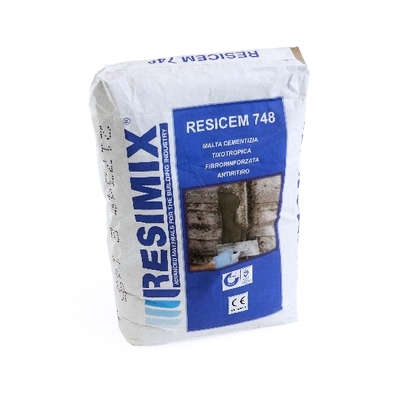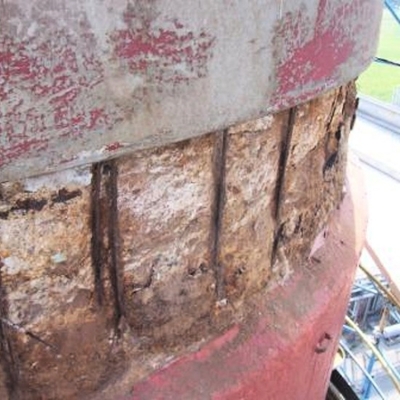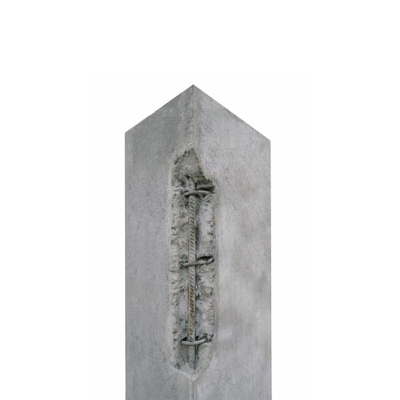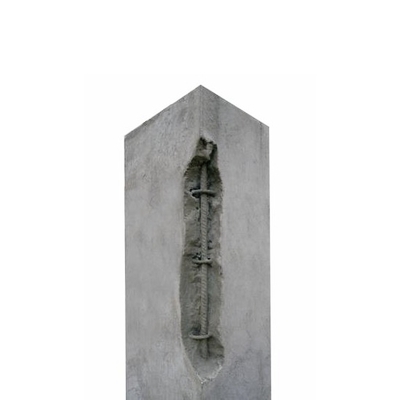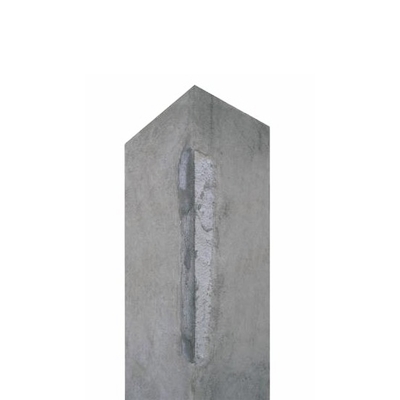RESICEM 748
MONO-COMPONENT MORTAR FOR MENDING, RESTORATIONS, PLASTERS
Non-shrink thixotropic cement mortar with added special polymers and reinforced with fibres: excellent mechanical properties and resistant to sulphates. Used for structural restoration, reconstruction of concrete reinforcement cover, building-up, smoothing and restoration of concrete surfaces.
RESICEM 748 is particularly suitable to restore concrete because it structurally adheres to it and it does not display shrinkage phenomena. It is a pre-mixed system that only requires water to be added as per the ratio shown on the sheet.
Mortar prepared with RESICEM 748 has the following features:
- excellent adhesion to supports, concrete and reinforcing rods;
- high mechanical resistance;
- it does not contain chlorides and iron elements which may eat into the metal armours of the concrete;
- resistant to sulphates;
- hand or plastering machine applicable, easy to prop up and fast to float-finish;
- applicable vertically with thicknesses from 0.5 to 3 cm;
- resistant to antifreeze salts;
Mechanical characteristics change depending on the amount of water used: the table below refers to mortar packages with 4 lt of water for 25 kg powder product at +20°C and 65% r.h.
| Mechanical characteristics | U.M. | |||||||||||||
|---|---|---|---|---|---|---|---|---|---|---|---|---|---|---|
| Compression strength: after 24 hours after 3 days after 7 days after 28 days | 18 - 20 30 - 35 45 - 48 60 - 65 | N/mm2 N/mm2 N/mm2 N/mm2 | ||||||||||||
| Bending strength: after 24 hours after 3 days after 7 days after 28 days | 4 7 10 11 | N/mm2 N/mm2 N/mm2 N/mm2 | ||||||||||||
| Elastic modulus | 28000 | N/mm2 | ||||||||||||
| Adhesion to concrete after 28 days with direct traction | > 2 | N/mm2 | ||||||||||||
| Density | 2,10 | kg/dm3 | ||||||||||||
| RESICEM 748 + WATER mixture ratio | 100 + 16 |
Preparation of the support
The support must be healthy, compact, clean, oil and fat stain-free: remove corroded or decayed concrete through bush-hammering, sandblasting or other suitable method until you get to the intact support.
Metal armour at sight must be white metal sandblasted (SA2 – SA3 degree) and protected with RESICEM 715 carefully applied in two coats: if it is not possible to sand-blast, use metal brushes.
Preparation of the product
Firstly, pour ¾ of required water in the mixer o in the bucket and add RESICEM 748 when shaking: mix at low speed to avoid excessive air intake for 3-4 minutes and then add the remaining water. We do not recommend mixing by hand and partially using the package.
Let the mixture settle for a few minutes before application.
Application
Abundantly wet the support. For better adhesion of new filling layers we recommend roller or brush laying of RESIRIPRESA 902, acryl-cement cod shut casting on which, layer upon layer, RESICEM 748 mortar is applied.
Apply by hand or with plaster sprayer for the thickness required. Do not exceed 2 – 3 cm at a time and
compact, smoothen and hand-float.
Notes
Application temperature from +5°C to + 35°C
After applications during the summer season, keep surfaces wet for perfect curing of the filling material
applied.
Keep the surface of the mortar applied wet for at least 24 hours.
Apply RESICEM 748 within 30 minutes from mixture; the product starts setting after approx. 5 hours.
The product can be walked on after 18 hours and can be subject to mechanical stress after 3 days; full hardening occurs after 28 days.
With a 25 kg bag, use 4 lt of water; approx. 13 lt of mortar can be obtained (yield of a bag) from this mixture.
Consumption for 1 cm thickness is approx. 19 kg/m2
Available in 25 kg packages.
The product remains unaltered for at least six months if stored in a dry and sheltered place and in its original and sealed containers
RESICEM 748 is used to:
- Restore concrete structures and reconstruct the concrete cover;
- Structural reinforcement of masonry;
- Settling superficial defects on horizontal and vertical structures;
- Restoration of concrete in stacks, beams, plankings, bridge joints and railways and road viaducts;
- Restoration of concrete in galleries, tanks, channels, bridges, dams, etc.;
- Mending of prefab elements;
- Packaging of structural screeds;
- Packaging of plasters with high resistance to carbonation features.
